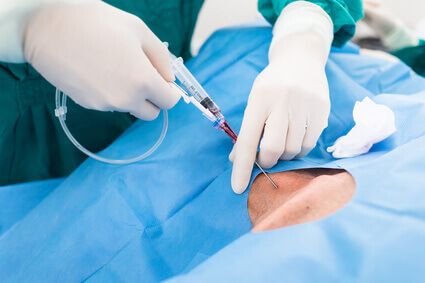Infective Endocarditis (IE) rate after TAVR ranges from 0.7% to 3.4%, depending on the different analyses, and is comparable to that after SAVR.

Close to 50% of patients treated with surgery received a prosthetic valve; in TAVR, the figure is lower, possibly due to the characteristics of patients (even though it remains unclear).
Researchers looked at the Infective Endocarditis after TAVR International Registry to compare antibiotic treatments.
The study included 473 patients treated with antibiotics and 111 treated with cardiac surgery and antibiotics.
Patients undergoing surgery were younger, had higher body mass index and lower kidney insufficiency. They also presented lower risk score for surgery.
Mean time between procedure and IE symptom onset was 5.7 months (1-14). Early IE was more frequent than late IE and the most frequent germs were Enterococci, Staphylococci Aureus, and Coagulase-Negative Staphylococci.
Read also: TAVR After Endocarditis? Contraindication or Last Resort.
Symptoms were similar in both groups, except for the fact that patients undergoing antibiotics had fewer neurological symptoms.
The eco-Doppler of the surgery group showed the presence of slightly larger vegetations, peri annular compromise and TAVR scaffold compromise. There were no differences in aortic or mitral valve regurgitation values.
Mean time between symptom onset and surgery was 17.5 days (6-41). In hospital and one year mortality rates were similar: 29.1% for the antibiotics group vs 32.6% for the surgery + antibiotics group (HRunadj: 0.85; 95% CI: 0.58-1.25); and 47.1% vs 48.2% (HRunadj: 0.88; 95% CI: 0.64-1.22) respectively.
Read also: Same Contrast Dose, Different Risk of Kidney Injury, Depending on Procedure.
Variables were adjusted with no regard of in-hospital or one-year mortality differences (HRadj: 0.92; 95% CI: 0.80-1.05) and (HRadj: 0.95; 95% CI: 0.84-1.07) respectively.
After adjusting for variables, in-hospital and 30-day mortality predictors were logistic EuroSCORE, acute kidney failure, persistent bacteremia, and septic shock. There were no differences in TAVR scaffold.
Conclusion
In this registry, most patients undergoing TAVR were treated with antibiotics alone. Cardiac surgery was not associated with improved in-hospital or 12-month all-cause mortality rates.
High mortality in patients with infective endocarditis after TAVR is strongly associated with patient and germ characteristics, as well as infective endocarditis associated complications.

Dr. Carlos Fava.
Member of SOLACI.org Editorial Council
Original Title: Surgical Treatment of Patients With Infective Endocarditis After Transcatheter Aortic Valve Implantation
Reference: Norman Mangner, et al. J Am Coll Cardiol 2022;79:772–785.
Subscribe to our weekly newsletter
Get the latest scientific articles on interventional cardiology



